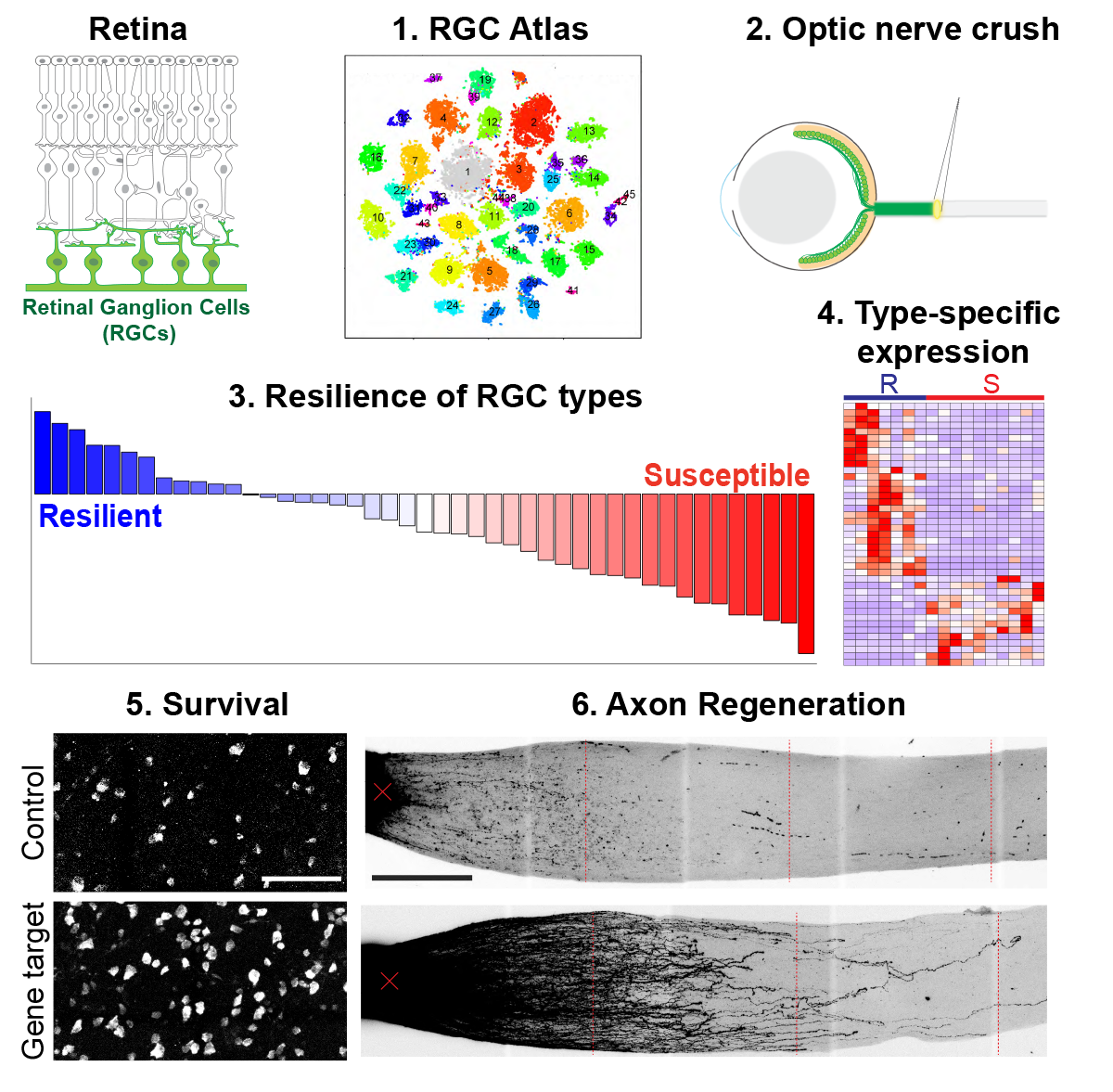You are here
Cell Types as Building Blocks of Neural Circuits
Speakers
Abstract
Classification of neurons was a major preoccupation of Cajal, but later came to be viewed as a fairly boring enterprise. However, inability to define neuronal types has now emerged as a major bottleneck in analysis of neural circuits and brain disorders. Recent technical advances are improving the situation. We have applied one of them, high throughput single cell RNAseq, to the retina, the model system on which our research focuses. To generate a cell atlas, we obtained large numbers of transcriptomes, improved bioinformatic methods for analyzing the data, and matched types defined molecularly to those defined by morphological and physiological criteria. The mouse retina (>100,000 cells profiled) appears to comprise around ~130 cell types. We are now using the atlas to probe retinal development, function and dysfunction in several ways: (1) Profiling retinal ganglion cells (RGCs) at earlier stages to learn how immature cells of a heterogeneous class diversify into ~45 types. (2) Analyzing these RGC types following damaging their axons to seek genes that contribute to differences in the vulnerability to injury. (3) Generating atlases of human and non-human primates, and using them to assess expression of genes implicated in blinding diseases. (4) Probing the evolution of cell types by profiling cells from several other vertebrates, including chick, marmoset, zebrafish, ferret, peromyscus, and pig.


